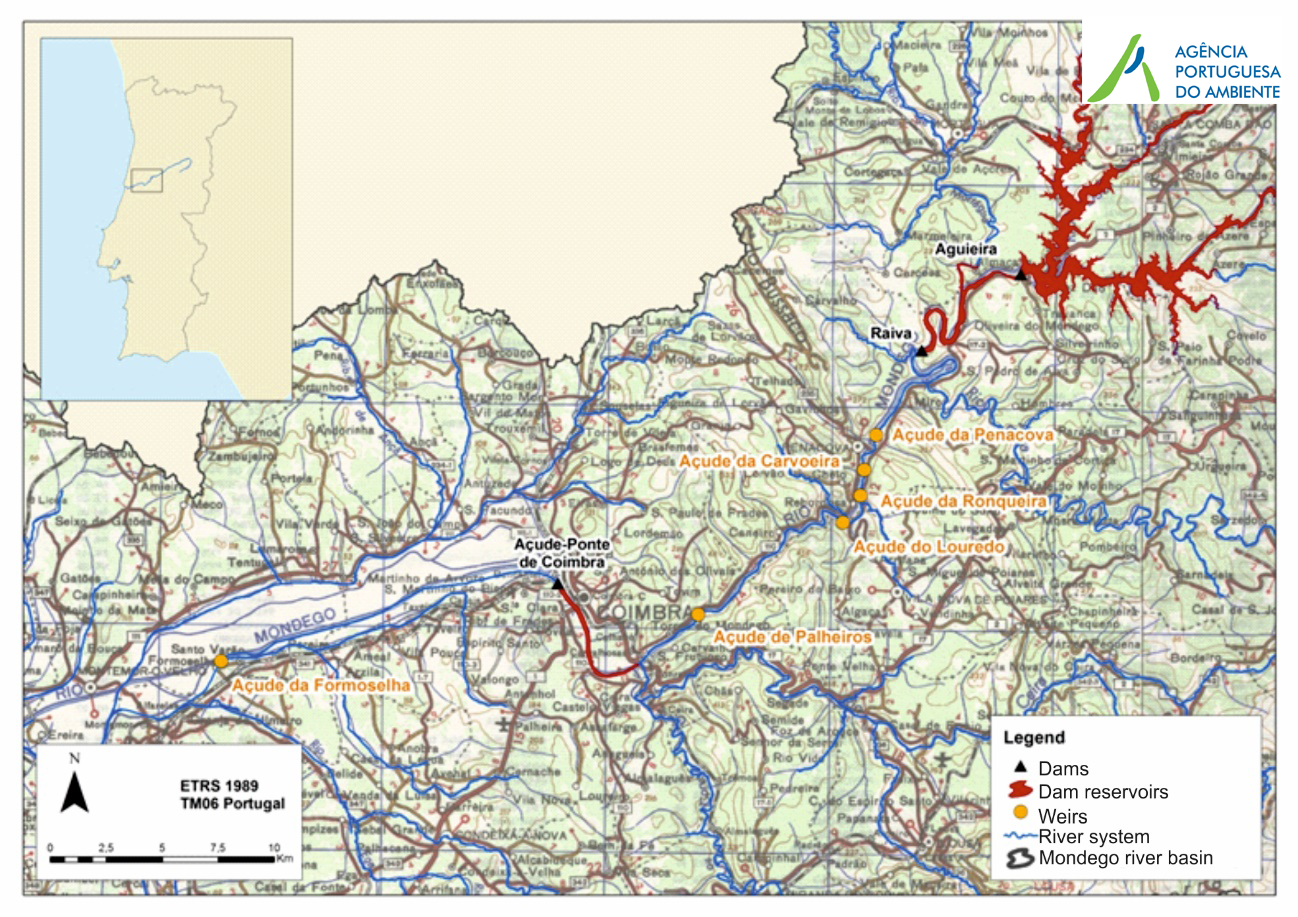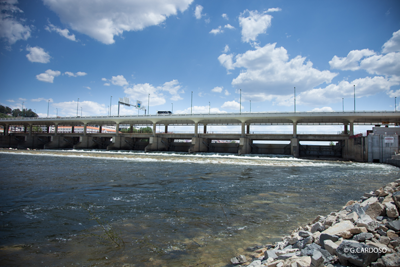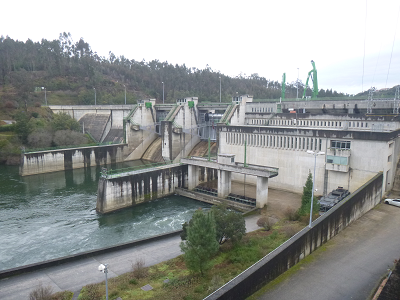Where the work is being done
The Mondego river basin (6645 km2 of catchment area) is located in the central region of Portugal and characterized by a Mediterranean climate with a strong inter-annual flow variation and accentuated seasonal events of flooding and drying over an annual cycle.
 Study area in River Mondego: main dams and location of the weirs to be intervened. |
 Açude-Ponte dam. |  Raiva dam. |
River Mondego is the fifth main Portuguese watercourse, and the largest running entirely in Portuguese territory. River Mondego runs 258 km from its source in Serra da Estrela, at 1525 meters above sea level, to its mouth in the Atlantic Ocean next to the city of Figueira da Foz. Its major tributaries are rivers Alva, Ceira and Dão, at the upper reaches, and rivers Pranto, Arunca and Ega, at the lower part of the basin.
Since 1981, River Mondego has become highly impounded and regulated after the construction of two large hydroelectric power dams, the Aguieira and Raiva dams (located 86 and 80 km upstream the river mouth, respectively), of six multiple-use dams (1.6-89 hm3), and of a number of small weirs throughout its course.
The Açude-Ponte dam, built at Coimbra, aproximatelly 45 km upstream from the river mouth, in 1981, for flood protection, water supply, irrigation and industrial water uses, was the first unsurmountable obstacle for migratory fish species occurring in this basin, until 2011 when a new fish pass was built in this structure, since the first one was inneficient.
These larger obstacles, together with the presence of a set of low head weirs, mostly built for agricultural and recreational purposes, are responsible for a considerable degree of longitudinal fragmentation that can be highly detrimental for fish species by:
- i) blocking their movements and limiting the access to adequate spawning or feeding areas;
- ii) causing artificial increases of density that can impair regular population dynamics;
- iii) segregating individuals from different age-classes up and downstream of the obstacles;
- iv) decreasing habitat quality and availability.
River Mondego represents an important stronghold for diadromous species, most of them with a notorious conservation status and a high socioeconomic value. More specifically, sea lamprey and shad species are particularly interesting and valuable as gastronomic delicacies in this region, promoting the development of a remarkable professional fishery, and generating important incomes for local population and regional tourism activities (e.g. restaurants, hotels). In part due to the habitat fragmentation that exists in this basin, migratory fish species tend to diminish their abundance resulting in both ecological and socioeconomic losses.
Recently, this situation began to change. The construction of a fish pass in the Açude-Ponte dam represented the first step of the restoration process and motivated further interventions in five of the smaller existing obstacles to promote successful fish passage.